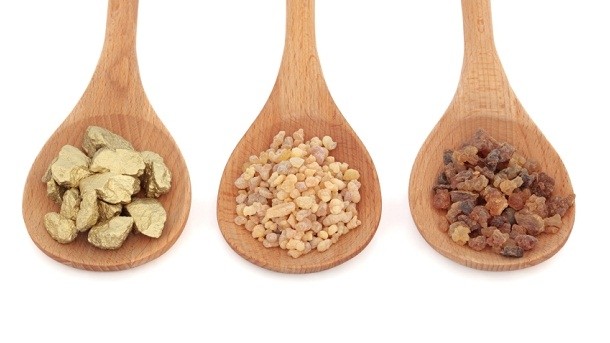Wise men: Gifting the first cosmetics formulation?

In doing this, we also called upon the help of cosmetics chemist and owner of Colin’s Cosmetic Consultancy, Colin Sanders, to give his view.
Gold
We are probably all most familiar with gold, but it is actually the least used in personal care products.
Gold nanoparticles have a wealth of pharmaceutical and medical uses; however it is inert and has no obvious cosmetic benefits apart from making things look sparkly, says Sanders.
Gold salts are on the list of materials banned in the EU; however gold itself is permitted as a colour and even has a colour index number.
“Gold doesn't get much use in actual cosmetic pigments,” Sander tells Cosmetics Design. “Sigmund Linder for example supply over a dozen varieties of gold glitters for use in various cosmetics, none of which contain even a trace of the element itself.”
Frankincense
Frankincense, also called olibanum, is an aromatic resin obtained from trees of the genus Boswellia. It is characterized by a balsamic-spicy, slightly lemon, fragrance of incense, with a conifer-like undertone, and used in the perfume and cosmetics.
Frankincense is one of the oldest widely traded commodities and Bethlehem is geographically close to the main sources in the Horn of Africa and the Yemen.
“As such it was probably a bit of a boring gift, perhaps the 1st century equivalent of socks or a matching pen and propelling pencil set,” states Sanders. “It continues to be an interesting material for the cosmetic chemist though, given that clinical work has revealed that it has anti-ageing properties.”
Myrrh
Myrrh is the aromatic resin of a number of small, thorny tree species of the genus Commiphora, which is an essential oil. It is also a similar material to frankincense coming from the same region and also being an exudate from a shrub.
Myrrh is used in a number of personal care products such as mouthwash and toothpastes, and is used in some traditional medicine as a skin ailment, however it is not used as widely as frankincense.






